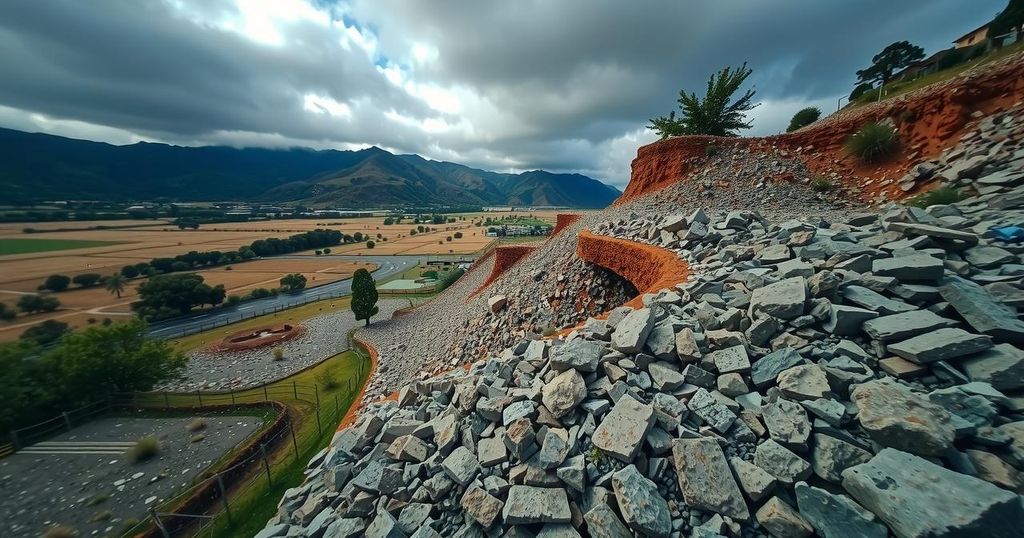Central Peru was hit by a 5.7-magnitude earthquake on Tuesday, confirmed by the GFZ. The tremor struck at 19:39:36 GMT, affecting various communities and causing widespread concern regarding safety and structural stability, particularly due to its shallow depth of 10 kilometers and the region’s known seismic activity.
Central Peru experienced a significant 5.7-magnitude earthquake on Tuesday, confirmed by the GFZ German Research Centre for Geosciences. The earthquake struck at 19:39:36 GMT, affecting multiple communities in the central region of the country. Initial reports indicate that the tremor was felt widely, raising urgent concerns regarding the safety of local inhabitants and the integrity of surrounding structures. The epicenter of the earthquake was located at 12.84 degrees south latitude and 75.13 degrees west longitude, an area characterized by frequent seismic activity. This location lies within a tectonic zone where the Nazca and South American plates converge, making such seismic events a common occurrence. Given its shallow depth of merely 10 kilometers, the earthquake likely resulted in more severe surface shaking, which increases the risk of structural damage or landslides, particularly in rural or mountainous regions. In the aftermath of the earthquake, it is expected that Peruvian emergency services and local authorities will conduct evaluations to assess the situation and potential damages. Initial assessments will prioritize the evaluation of impacts on infrastructure critical for transportation and local livelihoods, alongside efforts to ensure resident safety. Continued monitoring for aftershocks and additional seismic activity is likely to occur as authorities respond to this natural event.
Understanding the seismic activity in Peru is crucial as it is situated along the boundary between two major tectonic plates—the Nazca and South American plates. This geographic positioning makes it susceptible to frequent earthquakes. In addition, earthquakes with shallow depths, such as the recent 5.7-magnitude quake, tend to produce more intense ground shaking, potentially leading to significant damage in impacted areas. Local authorities often prioritize safety assessments in such events to mitigate risks associated with secondary seismic activities like aftershocks.
In summary, the recent 5.7-magnitude earthquake in central Peru has prompted a thorough response from emergency services and local authorities. With significant seismic activity in the region, the earthquake’s shallow depth raises serious concerns for structural integrity and safety. Continuous monitoring and assessments will be critical in managing the aftermath and ensuring the well-being of the affected communities.
Original Source: menafn.com






